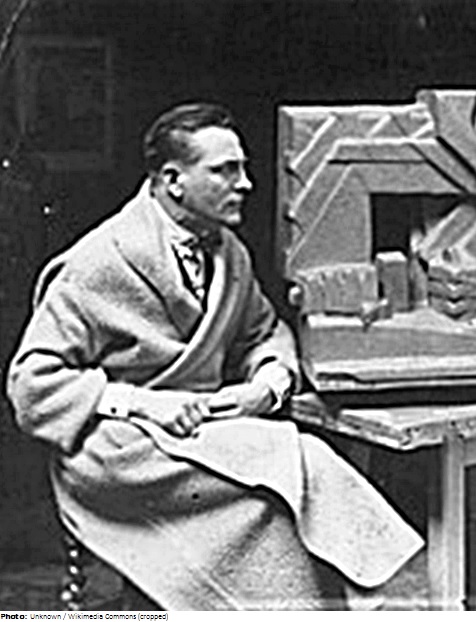Pierre De Soete

Biographical information
| Roles | Competed in Olympic Games |
|---|---|
| Sex | Male |
| Full name | Pierre•De Soete |
| Used name | Pierre•De Soete |
| Born | 1886 in Molenbeek-Saint-Jean, Région de Bruxelles-Capitale (BEL) |
| Died | 16 August 1948 in Bruxelles (Brussels), Région de Bruxelles-Capitale (BEL) |
| NOC |  Belgium Belgium |
Biography
Pierre de Soete is considered one of the leading sculptors of the early 20th century in Belgium. Orphaned at an early age, he enrolled at the Molenbeek Academy of Design but was a largely self-taught sculptor. De Soete created sculptures and public monuments and the mascot for the Belgian car manufacturer Minerva. In 1927 he travelled to the United States to compete in the Gordon Bennett Cup ballooning competition. There, he met American architect Whitney Warren, with whom he restored, for instance, the library of the University of Louvain, which had been damaged by German artillery in World War I. He designed the controversial caption proposed by Warren: “Furore Teutonico Diruta; Dono Americano Restituta” (destroyed by German fury, restored by American generosity), which, however, was never installed.
The 44 cm high bronze figure Taking of the Olympic Oath, also known as Le sportif or Champion, was apparently the basis for two large statues, Mens sana in corpore sano in the district Laeken of Bruxelles near the Heizel-Stadium and one in Schaerbeek for the victims of early automobile sports. The Olympic Salute is probably the Belgique l’athlète vainqueur (Athletic Winner from Belgium) of 1922, a 43.5 cm high bronze. In 1923, the trophy Vers la Victoire (Towards Victory) was created, which was dedicated to the Belgian racers Leopold and Robert Guelis, friends of De Soete. The work was 92 cm long and 38 cm high. Also made of bronze is the 34.5 x 33 cm Joueur de tennis (Tennis player) on a marble block. Only one picture in the catalog of the exhibition is available of the Étude lancement de poids (Study: shot put). Two similar versions do exist of the Boxer, but only one is called Étude de boxeur (Study of a Boxer). It is 20 cm high plus 11 cm for the pedestal. Le vainqueur, buste (The Winner, bust) was created in 1924. He also appears under the title Caesar, bust. The bronze head is - without pedestal - 23 cm high. The Grande plaquette “Vainqueur” (Great plaque “Winner”) was re-cast several times for various occasions until the 1940s. The bronze material was coated with various metals.
Results
| Games | Discipline (Sport) / Event | NOC / Team | Pos | Medal | As | |
|---|---|---|---|---|---|---|
| 1928 Summer Olympics | Art Competitions |  BEL BEL |
Pierre De Soete | |||
| Sculpturing, Medals And Reliefs, Open (Olympic) | ||||||
| Sculpturing, Medals And Reliefs, Open (Olympic) | ||||||
| Sculpturing, Medals And Reliefs, Open (Olympic) | ||||||
| Sculpturing, Medals And Reliefs, Open (Olympic) | ||||||
| Sculpturing, Medals And Reliefs, Open (Olympic) | ||||||
| Sculpturing, Statues, Open (Olympic) | ||||||
| Sculpturing, Statues, Open (Olympic) | ||||||
| Sculpturing, Statues, Open (Olympic) | ||||||
| Sculpturing, Statues, Open (Olympic) | ||||||
| Sculpturing, Statues, Open (Olympic) | ||||||
| Sculpturing, Statues, Open (Olympic) | ||||||
| Sculpturing, Statues, Open (Olympic) | ||||||
| Sculpturing, Statues, Open (Olympic) | ||||||
| Sculpturing, Statues, Open (Olympic) | ||||||
| Sculpturing, Statues, Open (Olympic) | ||||||
| Sculpturing, Statues, Open (Olympic) |